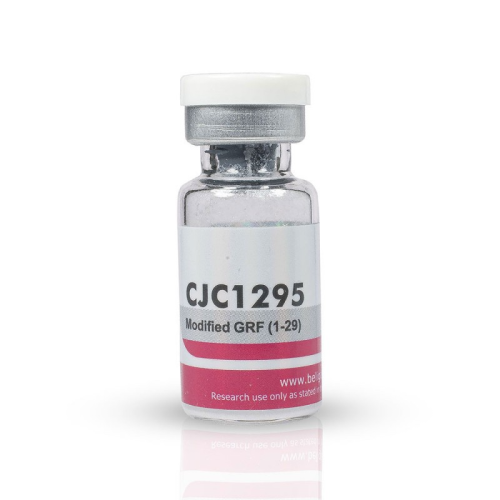CLASSIFICATION
GHRH Analogue
ACNE
No
WATER RETENTION
No
HBR
No
HEPATOTOXICITY
No
AROMATIZATION
No
MANUFACTURER
Beligas
WAREHOUSE
International Warehouse 3
SUBSTANCE
GHRH Peptide
,
CJC-1295 is a synthetic analogue of growth hormone-releasing hormone (GHRH) consisting of 30 amino acids. Research has shown that it is highly effective at boosting the secretion of growth hormone and IGF-1 without adversely impacting the natural pulsatile release of growth hormone.
It is common to use CJC-1295 in combination with Ipamorelin because it is more specific as a GHRH. While Ipamorelin also increases growth hormone secretion, it does not cause the appetite stimulation or rise in cortisol, acetylcholine, prolactin, and aldosterone that can occur with other peptides in its class. Ipamorelin is generally well-tolerated and works effectively with CJC-1295.
Pituitary
Gland Stimulated:- Enhanced secretion of growth hormone and IGF-1 levels without raising prolactin - Increased body weight and growth due to higher protein synthesis - Boosted muscle growth - Improved bone density - Enhanced immune function - Better cognitive abilities and memory - Elevated collagen production - Greater fat loss - Increased cellular repair and regeneration
Benefits of CJC-1295 include:Additionally, CJC-1295 is known to promote slow-wave deep sleep, which is crucial for optimal muscle growth, memory retention, and rejuvenation.
GHRH is produced in the hypothalamus and its pulsatile release stimulates the release of growth hormone from the pituitary gland. GHRH has a very short half-life of just a few minutes, which limits its effectiveness.
There are two forms of CJC-1295:The first 29 amino acids of GHRH represent its active portion and are commercially available as a peptide known as Sermorelin. To extend its half-life to 30 minutes, Sermorelin was modified to create CJC-1295. This was further enhanced by adding DAC (Drug Affinity Complex), which binds to the blood protein albumin, extending its half-life to approximately 8 days, resulting in what's called CJC-1295 + DAC. A non-DAC version of CJC-1295 is also available, designed to simulate a more natural growth hormone spike each night.
The longer half-life due to DAC means that injections may only be required once or twice a week. However, this prolonged presence in the blood can lead to a steady stimulation of growth hormone release from the pituitary that is not physiological, potentially diminishing the amplitude of growth hormone pulses and causing reduced tissue stimulation.
When using a long-acting CJC molecule, it is advisable to have "hormone holidays" lasting three months every three to six months to allow the pituitary gland to "recover." During these breaks, Sermorelin is preferred over CJC-1295 + DAC.
Safety:These "hormone holidays" may also help to reduce the risk of developing growth hormone resistance. This resistance could theoretically arise from the formation of antibodies that deactivate growth hormone or a reduction in the number of growth hormone receptors on tissues. However, these are theoretical concerns, as no long-term investigations have been conducted on this matter.
Reactions at the injection site (such as irritation, redness, swelling, pain, or itching), headaches, diarrhea, vasodilation (which may cause flushing, warmth, or transient hypotension), nausea, and abdominal discomfort.
Potential side effects of CJC-1295 include:
